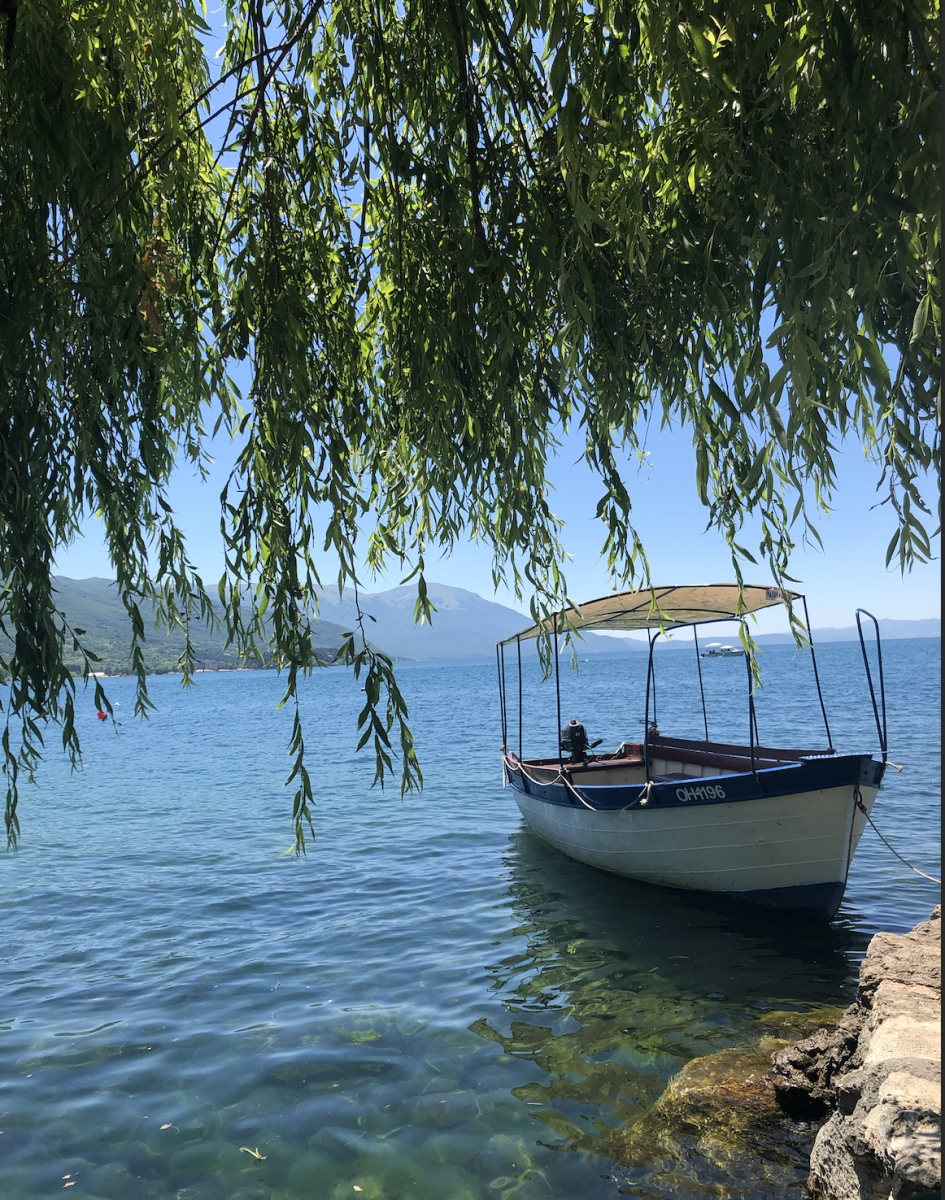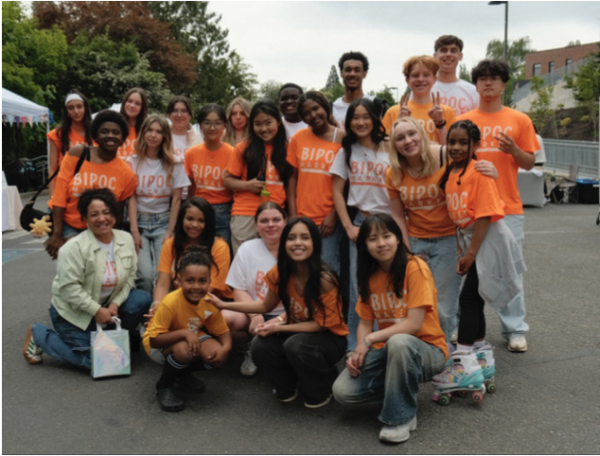Day 8: Siem Reap
March 17, 2019
Bayon
by Gabrielle Krieger
Arriving at Bayon temple in the comfort of an air conditioned bus early on a humid Cambodian morning, our group was ushered out by our zealous tour guide to explore. The sun was beating down but we continued through a dusty path and arrived at a series of stone ruins. The first section we looked at depicted daily life through a series of stone carvings. It showed, unlike most ancient monuments of Cambodia, how the lower classes lived. We saw images of people farming, cooking, fighting, and really just existing.
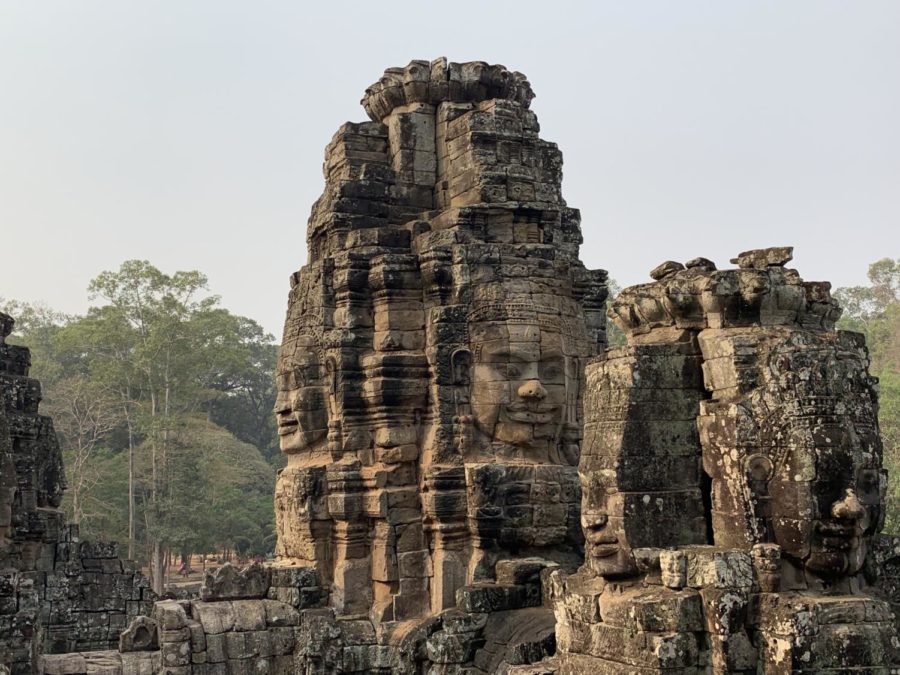
Next we climbed newly built wood stairs to see the main section. Inside the upper part of the temple, there were statues of faces, four on each side of the pillars, to face each of the four cardinal points. Some believe these were carved to represent King Jayavarman VII himself, while others think they belong to Buddha. According to our guide, before the deterioration of the temple, if you had walked around the surface of the temple, each part would look the same. It was made to look similar 360 degrees around. The Bayon temple was made by a Buddhist king for his people to worship. Like many temples before his, it was semi-destroyed when a new Hindu king came into power. Yet the king, thinking ahead, buried one of his Buddha heads in the ground to preserve it if this happened.
While walking through one of the renovated heads, we had an opportunity to go under. We slipped off our shoes, and wandered into to the smoky shrine. At the shrine, we knelt in respect and lit incense. We then all shared a moment of silence.
Ta Prohm
by Abby Givens
Ta Prohm (ancestor Brahma), formerly known as Rajavihara (Monastery of the King), is a Buddhist temple dedicated to the mother of the King Jayavarman VII. A stone stele commemorating its creation in 1186 was found in the temple.
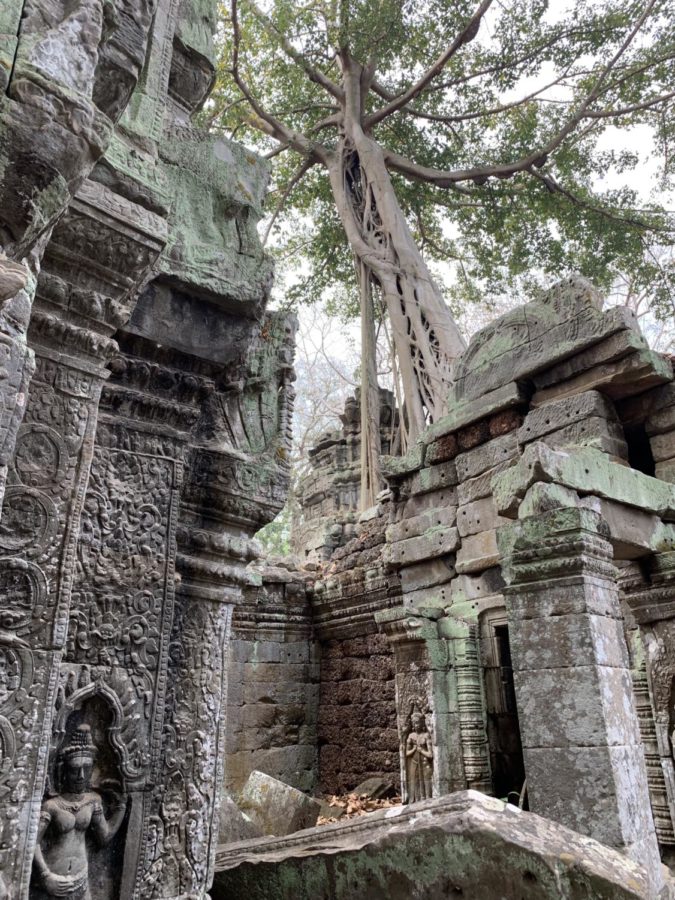
Due to centuries of abandonment, parts of Ta Prohm have crumbled into piles of stone. These parts of the temple are being reconstructed in partnership between the Archaeological Survey of India and APSARA (Authority for the Protection and Management of Angkor and the Region of Siem Reap).
Our guide, Ratana, talked about the precious jewels the king left within the walls of the temple for his mother’s spirit, and how people are still looking for this treasure.
According to Ratan, a seed dropped by a bird fell into a crack between the stones that make up the temple. Due to the amount of rain Cambodia receives in monsoon season, the seed was given the perfect setting to grow roots. Now hundreds of years old, the roots of this grand tree have become intertwined with the man-made architecture so that when it falls so too will the temple.
Ta Prohm was added to the World Heritage sites listed by UNESCO in 1992, and it is one of the most visited sites in the Angkor region. This is in part due to its fame gained from being the setting of a scene in the Tomb Raider movie with Angelina Jolie.
Angkor Wat
by YoungSeo Jo
Angkor Wat was originally built in the 12th century as a Hindu temple but was transformed into a Buddhist temple within the century. While it was packed with tourists we still got a sense of how huge and vast this temple is. It almost seemed impossibly big for a temple made for a single king.
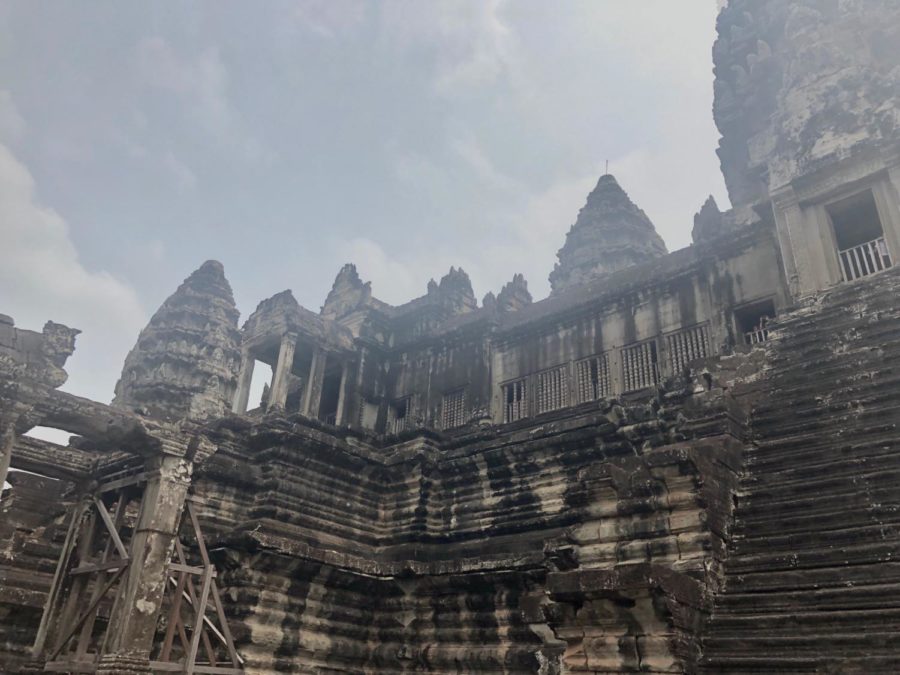
Ratana, our tour guide and an acquaintance of Chanthen, led us through the back entrance of the temple. The crumbling stairs did no justice to what awaited us inside. Our experience started with a parking space for the king’s elephant, which was a proper introduction to one of the biggest religious temples in the world. The pure size of the temple made my recollection of doorways hazy but the intricate design was more than memorable.
The whole temple was carved with designs of the life and the culture of the Khmer people 600 years ago. The walls was a rare memorabilia of the life back then whose records got destroyed and are still being discovered. The excavation of the temples started 100 years ago during the French colonization and still continues on today. The lack of written record make it hard to assemble the pieces of history left behind by these beautiful temples. The library, only identified by the inscription on the stones, contained no evidence of books or records.
Ratana pointed out to us the residue of gold that still remains on the designs of the temple. Nobody could believe that this unimaginably huge temple was all delicately covered in gold. This evidence of gold spoke to us the power that the king had. According to Ratana the king had 2,000 concubines in the palace and 2,000 more in the temple that carried out his wishes. The king came to power by murdering the previous king. The previous king’s allies would be turned into slaves and were given the task to either build or destroy new temples.
All of the hype about Angkor Wat is justified. It is truly magnificent and indescribable and more than deserves the attention it is getting from tourists from all around the world.
Khymer cuisine
by Jade Cheatham
Khmer cuisine plays a large role in Cambodian culture. We got a small sampling of it at different restaurants in Siem Reap including Haven, an NGO that trains underprivileged young adults to cook.
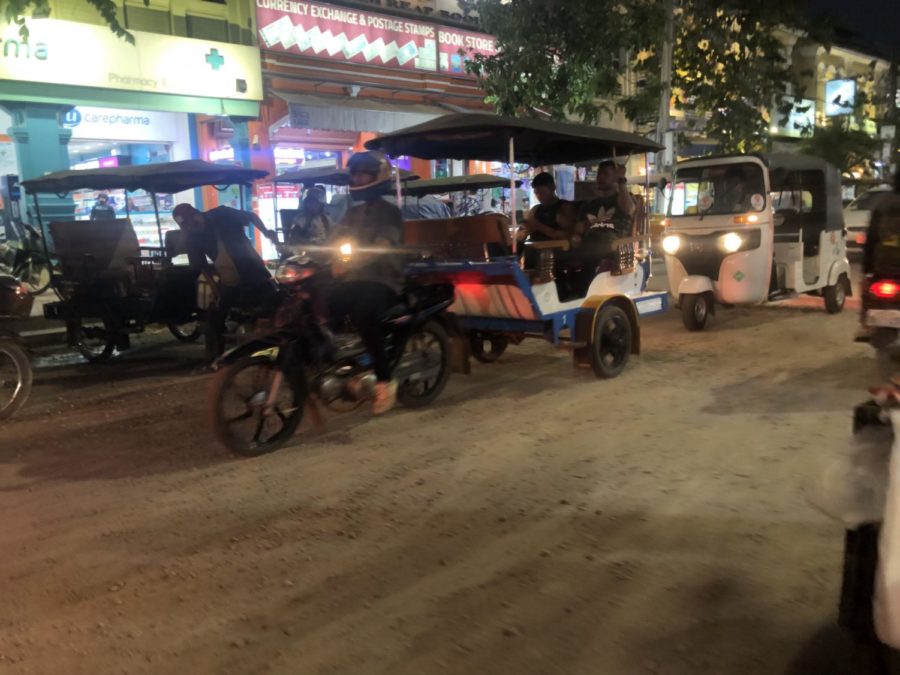
We rode tuk tuks, which are rickshaws pulled by motorcycles. They have no seatbelts, doors or windows, but the fresh air feels so good compared to the Cambodian heat.
The food in Cambodia is vastly diverse, and they serve food from many countries, especially the ones surrounding them, such as Vietnamese and Thai. On the streets food is served ranging from fruits, to ice cream to tarantulas.
Chanthen bought us fruits including mango and guava that came along with a spicy sauce. It was nothing I’ve ever tried before, but the contrast between the sweet, sour and spicy was delicious.

Cambodia also has a range of vegetarian options, which was perfect for the three vegetarians in our group. Overall the food was delicious, flavorful and very different from the food in Hanoi.
Phare circus
by Julia Henning
On Saturday night we attended Phare, a local Cambodian circus in Siem Reap. The circus was the product of students from a training school in Battamang. Every person trains in acrobatic and circus tricks for up to eight years before joining Phare.

The specific production we saw was called Eclipse. It followed the story of an outcast man in his village and how he comes into acceptance by the people there. The storyline did a great job of including tricks while also keeping with the theme of the story. It consisted of about 12 acrobats with tricks ranging from flips, aerial skills, balancing, dancing, 15-foot jumps, and even audience interaction. All of the performers were extremely talented in each of their own skills whether it was juggling, flexibility or acting.
After the show, we had the opportunity to talk with the artists and hear their stories. While we were nervous, we managed to be the journalists we are and speak to one of the performers about her experience in Phare. We agreed we would love to see it again in the future.
Pub Street and The Night Market
by Nina Doody

Pub Street and The Night Market are iconic parts of nightlife in Siem Reap. The first night we ventured out through the loud music and bustling tourists to explore Pub Street to get some rolled ice cream. Due to the fact we were tired and not used to the heat, we didn’t spend much time there.
The following night we explored the Night Market, which was full of street vendors, more ice cream, art, and an abundance of people. The atmosphere was painted by bright lights and loud music, probably coming from the nearest bar. Many of us found it to be a perfect place to find a few small souvenirs and gifts, including flowing pants, jewelry, purses, shirts and art work. Our schoolmate Chanthen, local to Siem Reap, bought us some fruit with a traditional spicy dipping sauce. Later she met up with her friends, who accompanied us to dinner.





